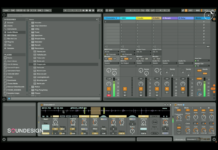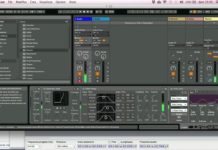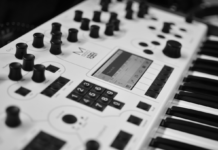“Is there life on Mars?â€, Bowie sings in of the same name song of 1973, number one in the 100 Greatest Songs of All Time, according to Neil McCormick, chief rock music critic of The Daily Telegraph. But the question of today is: “is there sound on Mars?”.
The earthlings’ interest to the Red Planet is part of human history, as well as the question is there life on Mars? and the collective imagination of Martians. Since 1960, they have followed a variety of space programs, with the aim of exploring Mars with different successes.
At present, the goal of NASA and ESA program is to achieve a human mission by the year 2030. That is this not the former approach to the postulated Colonization of Mars? Nasa is building a Mars virtual reality experience. Nasa’s senior communications manager Erin Mahoney said: “An important part of Nasa’s Journey to Mars is the work we are doing to make space more accessible to individuals and non-governmental entitiesâ€, and then “with more aerospace companies making human spaceflight part of their core business models, we expect that spaceflight will be an option for more people in the future than it is today. Hopefully, individual immersive virtual reality experiences in space will bring the concepts closer to reality for those who truly enjoy virtual life off of Earthâ€.
Really, the motion picture industry still supplies to make us daydreaming about the Red Planet. Here is a list of the most famous Sci-Fi movies about Mars, and here the five best and worst.
Lately, watching the last Ridley Scott’s movie The Martian (I would put in my own list of the best sci-fi movies about Mars) has aroused in me a reflection about acoustics of the Red Planet, given that “the film is the first genuine Mars movie. It is the first movie that attempts to be realistic and that is actually about human beings grappling with the problems of exploring Mars… “, as stated from the aerospace engineer Robert Zubrin.
Therefore: is there sound on Mars? And if so, how is its propagation? How is it perceived?
Before I get into these mazes of physics, I asked myself how the sound design of The Martian might be realistic rather than evocative and how much the diegetic sound may make sense. Ridley Scott wanted for the audience to feel the Mars monster totally unrelenting, totally unforgiving. The wind sound is a persistent and hostile presence, for example. All of this and much more tell us Oliver Tarney, sound designer and supervising sound editor (other info about sound effects and dialog design here.)
In the last period being shown an escalation of articles, web pages and audio materials related to sounds from space and space missions. Many of these sounds are from records of historical missions, others picked up from some probe (where of course, there is not the vacuum) or still others resulting from the sonification process of different recorded physical signals (electric and magnetic fields etc.). Some of these sounds are surrounded by an aura of mystery that has helped them become viral.
https://www.youtube.com/watch?v=2x1yR9NRtRU
NASA, for example, has a SoundCloud account with about 90k followers and 140 audio files available for download. These archives of sounds are being made public and Creative Commons licensing. Something like that was also made from ESA. Therefore, the sounds can not only be heard, but also remixed, sampled, and re-shared, to the delight of all sound designers and producers.
To know how sound propagated on Mars, we need to know first a little bit about its atmosphere, since acoustics is a fluid dynamic process. The molecular composition of the atmosphere differs greatly from that on Earth with 95% of the atmosphere being carbon dioxide (as opposed to trace amounts of carbon dioxide on Earth). The other elements of the atmosphere include Nitrogen, and Argon, with trace amounts of Water vapor and Oxygen. Mars’ atmosphere is also much thinner than Earth’s. Earth’s atmosphere is about 3 kilometers thick, while Mars’ one is very thin and transparent. The pressure of the surface of Mars is only about 0.7% of that on Earth at sea level, but it also changes significantly due to the seasons. During winter, some of the atmosphere’s Carbon Dioxide freezes and then it snows on the polar caps. The surface pressure also varies greatly throughout the planet, which is enough to support large winds which can create planet-wide dust storms that can last many months. Also, the temperature on Mars in cooler than Earth, ranging from -70 °C to 30°C.
However, there are similarities between Mars and Earth environments: the sound absorption mechanism by the atmosphere are very similar, but the difference in molecular composition between Earth and Mars, as well as the lower atmospheric pressure on Mars, are enough to result in much larger values for the absorption coefficient on Mars than on Earth (about 100 times larger). In addition to this, on Mars, sound travels slower about 2/3 the speed of sound in Earth’s. If we consider the sound from a loudspeaker with a sound power of 100 dB, on Earth it can travel a few kilometers before it gets fully absorbed into the atmosphere. The same loudspeaker on Mars would produce a sound that could only travel a few tens of meters and more slowly. This difference, for example, is an interesting engineering question about how to efficiently generate and receive sound on Mars.
In 1999, the ill-fated Mars Polar Lander mission had a low-cost microphone constructed in the hope that it would transmit sound samples back to Earth. But the Mars Polar Lander lost contact with Earth shortly after its descent into the Martian atmosphere and never recovered.
This first microphone was built at the University of California Space Science Laboratory and was constructed largely of off-the-shelf parts, including a microphone similar to those in hearing aids and a microprocessor chip used in speech recognition device. The team that built the instrument had expected that the microphone would detect a variety of natural and artificial sounds: dust devils, gusts, and even lightning caused by dust storms. The microphone would have also detected rare events such as sonic booms caused by meteors, and possibly infrasonic waves kicked up by the solar wind as it strikes the upper atmosphere, in addition to the daily sounds of the spacecraft itself.
Interest in the project was so intense that a second opportunity to fly the microphone experiment was provided by the Centre National d’Etudes Spatiales (CNES), the French space agency, on the Netlander mission to Mars in 2007. Netlander was to land four small identical landers on Mars to study the atmosphere and the planetary subsurface and interior core. The microphone was being redesigned to fit within the camera head of the Netlander probes being built by the German space agency DLR. In June 2004, funding difficulties within the French space agency (CNES) forced the cancellation of the Netlander mission, dooming the second chance to record sounds on Mars.
The Phoenix Lander had a microphone, but it was never turned on. Now, scientists are planning for the new microphone to be incorporated into the next rover. The microphone will have to record audio signals from 20 Hz to 10 kHz with a good sensitivity. While there are plans to incorporate the microphone, though, it will only be once the Mars 2020 rover is launched that we find out whether or not the microphone works and whether it will give us a better listening of the Red Planet.
At this point, we must only wait and hope that everything goes well. Meanwhile, we can prepare our favorite headphones and hi-fi and wait right now listening to the huge database of sounds available from outer space!
[Featured image by Tom Colbie]
- Sonic Adventures in Food – Part two - March 31, 2017
- Sonic adventures in food – Part one - March 15, 2017
- Is there sound on Mars? The mystery of generating and receiving sounds on the Red Planet - May 2, 2016






















